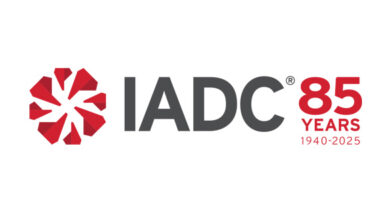Derek Morrow, Atwood Oceanics: From Scotsman to Aussie, he’s never looked back
Derek Morrow isn’t someone who likes to move backwards. At 20, he left his native Scotland and his mechanical engineering studies for the island of Jersey off the French coast. After seven years there – during which he became a junior partner in a small but successful construction and equipment hire company – he and his wife, Ros, decided it was time to move on.
Rather than going back to Scotland, the adventurous couple set their sights more than 10,000 miles away and headed Down Under in 1974. Once they arrived, they fell in love with the “friendly people and wide, open spaces” and never looked back. “We’re well and truly Aussies now,” said Mr Morrow, a manager of Atwood Oceanics in Australia.
After six years with a local dredging company, he got his start in the oil business when he answered a recruiting ad by Woodside Energy. In 1980, the company was just starting its North West Shelf gas project and was cranking up construction on its first big gas platform, pipelines, onshore facilities, etc. Mr Morrow got involved in the planning and construction of the North Rankin A platform, to this day one of the world’s largest offshore gas-producing facilities.
After the initial construction phase, he decided to move into the operations side, though he recalls that it was “a bit of a step out of my comfort zone at the time.” Good thing he took that step, though, because it introduced him to drilling and gave him the experience he’d need for his future career with Atwood Oceanics.
By 1990, Mr Morrow had left Woodside and taken a management position at a construction and engineering company. Then he bumped into an Atwood manager he had met while with Woodside, and the run-in led to a job offer. “And then suddenly I was working for Atwood,” he said. “There was quite a bit of serendipity there.” He has been with Atwood since May 1990.
NEW PHASE
After joining Atwood, however, Mr Morrow found himself once again working for Woodside. Atwood had just won a contract with the operator to design and build the drilling rig for their new Goodwyn A platform. After the rig construction and commissioning, he became operations manager – first for new Goodwyn A drilling, then for further drilling on the North Rankin A platform that he had helped to build years before. The Atwood crews began drilling in 1994 and continued together for seven year on those two platforms.
“The team made some great achievements together,” Mr Morrow said. Not only did they drill many highly challenging and highly deviated wells, they even set an offshore drilling record in 2001 with a 27,524-ft step-out on an extended-reach well (measured depth 30,440 ft). On the safety side, the crews received the Atwood President’s Safety Award, which recognizes an entire year of operations without a lost-time injury, for four consecutive years.
Personal successes were gratifying as well, as Mr Morrow watched some of his crew members join the industry as inexperienced roustabouts and gradually work their way up to driller. “I felt extremely lucky to be around great people with enormous capacity, whether it was my task to work for them, with them or to lead them,” he said.
Mr Morrow and his wife have two daughters, Debbie and Kate. And just to keep it in the family, Debbie has followed her dad’s footsteps into the oil and gas business – working for Woodside.
CHALLENGES
Today, Mr Morrow has moved into a broader role in support of Atwood’s operations in Australia. Since 2004 he has also served as chairman of the IADC Australasia Chapter, working with his drilling contractor peers in the region to address common challenges. This continues the commitment to and involvement in IADC by a large number of Atwood employees over many years, including Atwood president and CEO John Irwin, who served as IADC chairman in 2000.
One challenge faced by the Australasia Chapter has been the formation of the National Offshore Petroleum Safety Authority (NOPSA) in 2005, which has brought “significant changes to the way the Australian offshore oil and gas industry is regulated,” he said. This new national body unified offshore safety regulations, previously managed separately by each Australian state. The IADC Australasia Chapter has spent significant time responding to and handling these changes, he said.
Another challenge, he said, is one that the worldwide drilling industry faces together – a shortage of qualified personnel. “We have three times as many offshore rigs in the Australia/New Zealand region as we’ve ever had before, and most are under long-term contracts,” he said. While this has obviously put the labor pool under a big strain, the longer-term contracts have also created a training opportunity for drilling crews. Drilling contractors can now look out three or four years ahead, and this has enabled Atwood to implement an apprenticeship program. Apprentices who complete the program can earn a mechanical or electrical trade qualification.
“In days gone by, we were lucky if we could look six months ahead with any certainty. Now we can take good candidates, old or new, and work with them in the longer term,” Mr Morrow said. “We need to transfer knowledge to the next generation and create the crews for the decades to come before the old crew signs off.”




